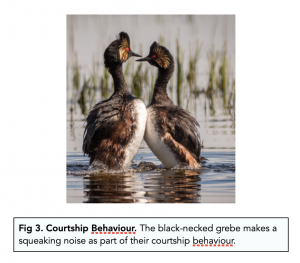Classifying Organisms (A-level Biology)
Classifying Organisms
Key Terms
Classification
Classification is how organisms are arranged into different groups called taxonomical groups, based on their similarities and differences. Organisms that are very similar are often classified into the same groups and sub-groups.
Classification of all organisms on Earth is important for evolutionary biology. It allows scientists to understand how organisms are related to each other, and how different organisms have developed and evolved over the evolutionary history of life on Earth.
Taxonomy
Taxonomy is the study of classification. It refers to the actual process of studying the similarities and differences in organisms, and eventually putting them into groups.
Species
Examiners often report that people misunderstand the definition of species. Here are three example definitions:


The second definition is not entirely true. Many animals within a genus can mate with each other. However, the offspring that are produce are hybrids which are usually infertile (cannot produce offspring of their own). For example, a horse can be mated to a donkey to produce a mule, but mules are not fertile. Therefore you have to mention “fertile” offspring.
Courtship Behaviours
- Courtship behaviours attract the opposite sex. Courtship behaviours are ritualised actions to attract members of the opposite sex of the same species. They enable the development of a bond to raise offspring together.
- Every species has a unique courtship ritual. Every species has its own courtship behaviour. There are also similarities in courtship behaviour within members of a genus.
- For example, birds sing to attract other birds. In birds, singing is often used as a courtship behaviour. Only animals of the same species (i.e. other birds) will be attracted.
- Courtship behaviour promotes pre-zygotic isolation. Pre-zygotic isolation is a series of barriers that prevent the sperm/egg of an individual from one species to combine with the sperm/egg of an individual from a different species. It is important because it ensures that when two individuals mate, the chances of successful fertilisation is increased.

Binomial Naming
Every single known species on Earth has a scientific name. The scientific name is a binomial, meaning that it has two parts:
- Genus – the first part of the name signifies the genus the species belongs to
- Species – the second part of the name uniquely identifies it as its own species
Example: Domestic Dog
For example, the domestic dog is known as Canis familiaris.
Canis is the genus name. Other animals in the genus Canis include wolves, coyotes and jackals.
Familiaris is the species name for the domesticated dog. It distinguishes the domestic dog from other members of the genus Canis.
- Canis familiaris: domestic dog
- Canis lupus: gray wolves
- Canis aureus: golden jackal
- Canis latrans: coyotes
Taxonomy is the science of identifying, describing, and classifying organisms based on their characteristics and evolutionary relationships. It is an important field in A-level Biology that helps us understand the diversity of life on Earth.
The main categories in the taxonomic hierarchy, from most inclusive to least inclusive, are domain, kingdom, phylum, class, order, family, genus, and species. This system allows scientists to organize and classify organisms based on their characteristics and evolutionary relationships.
The three domains of life are Bacteria, Archaea, and Eukarya. Bacteria and Archaea are both prokaryotic, while Eukarya is composed of eukaryotic organisms such as plants, animals, and fungi.
Organisms are classified into kingdoms based on their cell type, mode of nutrition, and other characteristics. The five main kingdoms are Monera (prokaryotes), Protista (eukaryotic single-celled organisms), Fungi (eukaryotic organisms that obtain nutrients by absorbing them from their surroundings), Plantae (eukaryotic, multicellular organisms that carry out photosynthesis), and Animalia (eukaryotic, multicellular organisms that obtain nutrients by consuming other organisms).
Binomial nomenclature is a system for naming organisms that was developed by Carl Linnaeus in the 18th century. It involves giving each species a unique two-part scientific name, consisting of the genus name and the species name. For example, humans are known as Homo sapiens.
Classification is important in A-level Biology because it helps us understand the evolutionary relationships and diversity of life on Earth. It also helps scientists identify and name new species, track the spread of diseases, and make predictions about the characteristics of organisms.
Organisms are classified based on their evolutionary relationships by comparing their genetic and physical characteristics. This involves the use of phylogenetic trees, which show the evolutionary history and relationships between different organisms.
Cladistics is a method of classification that groups organisms based on shared derived characteristics, rather than overall similarity. This approach allows scientists to identify the evolutionary relationships between organisms, and to create more accurate phylogenetic trees.
The classification of organisms can be challenging due to the complex and ever-changing nature of life on Earth. There are also many different ways to classify organisms, and some organisms may not fit neatly into any one category.
The study of classification can help us protect the environment by identifying and tracking the spread of invasive species, monitoring changes in biodiversity, and identifying areas of high conservation value. It can also help us understand the ecological relationships between different organisms, and the impact of human activities on the natural world.





Still got a question? Leave a comment
Leave a comment